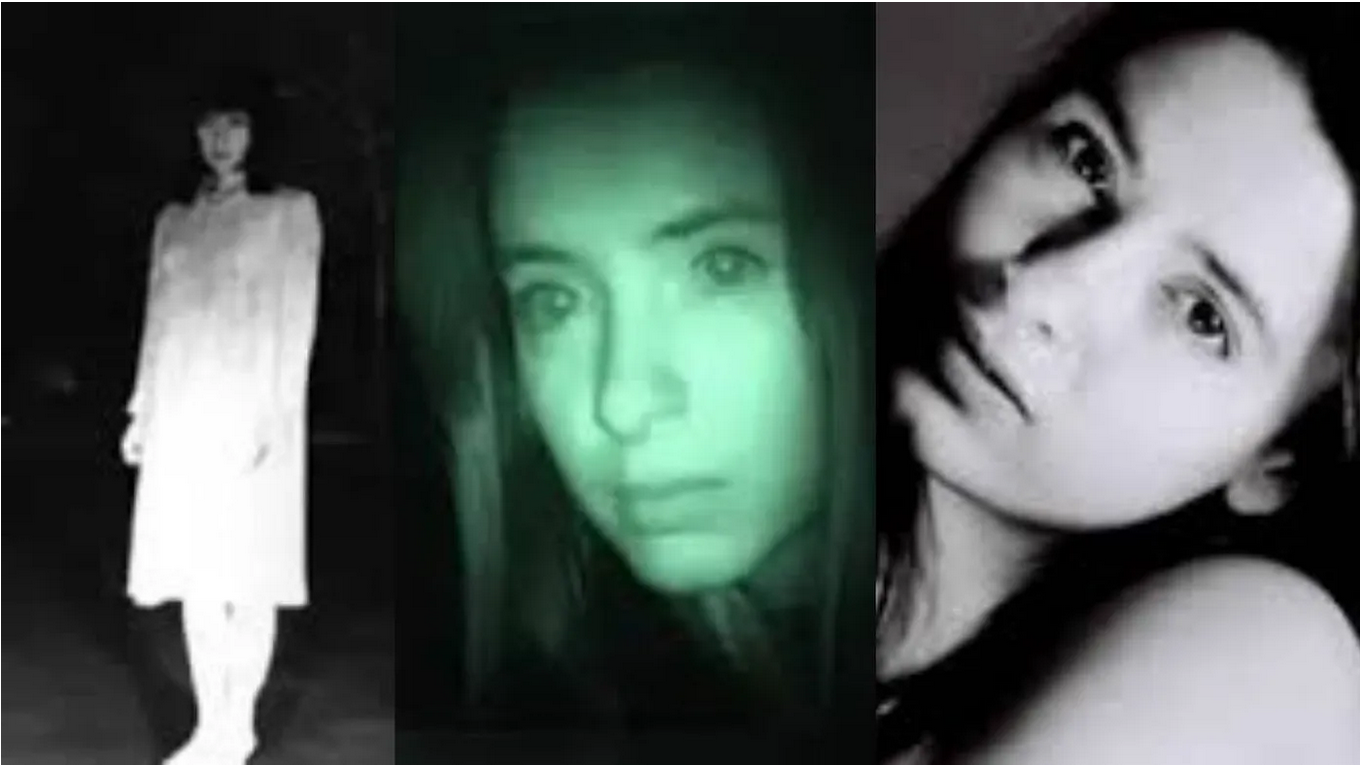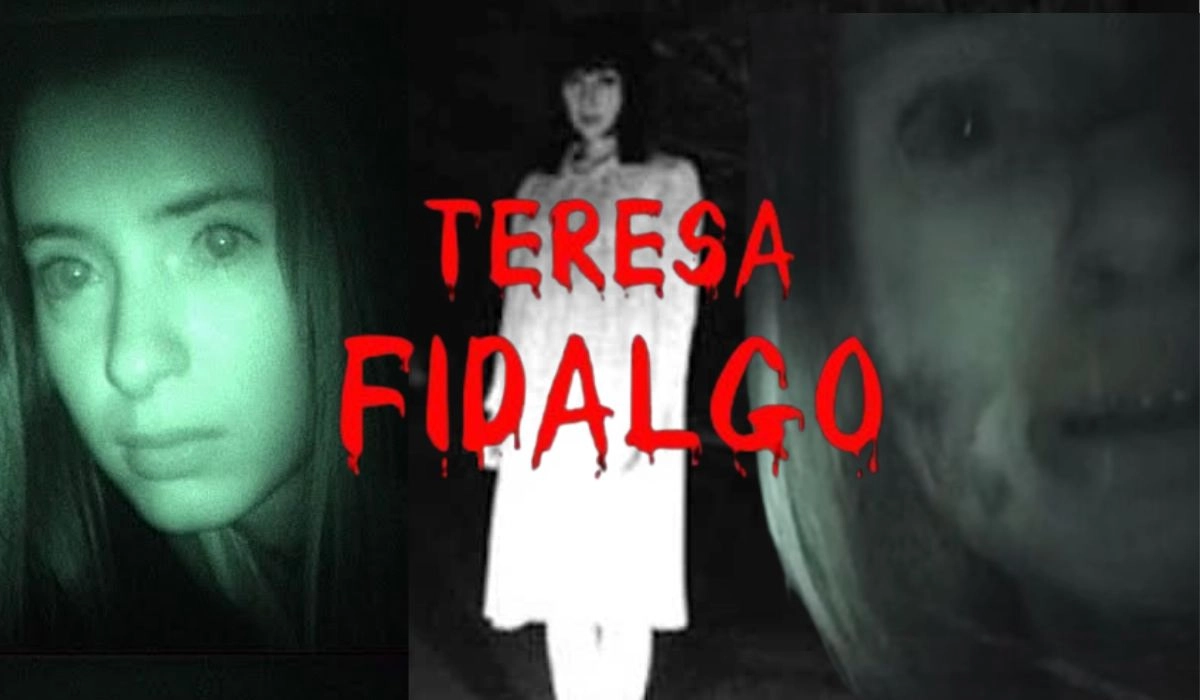Teresa Fidalgo: The Viral Ghost Story Explained
Is there a digital specter haunting the web, a chilling tale whispered across social media platforms, demanding attention with the threat of an unseen doom? The name "Teresa Fidalgo" has become synonymous with a viral ghost story that has captivated and unnerved internet users for years, prompting a quest to unravel the origins and the truth behind this enigmatic online phenomenon.
The story, as it has been widely circulated, paints a grim picture. Teresa Fidalgo is portrayed as a young woman who met an untimely end in a car accident in Sintra, Portugal, back in 1983. According to the narrative, her spectral presence lingers, finding expression through a series of chilling events that began to unfold after the incident. It's a tale that has been told and retold, evolving with each share and post, each iteration adding new layers of intrigue and suspense.
| Attribute | Details |
|---|---|
| Origin | Fictional character created for a short horror film titled "A Curva" by David Rebordo. |
| Year of "Death" (as per the story) | 1983 (in a car accident in Sintra, Portugal). |
| Viral Spread | Primarily through a short film and social media posts, starting around 2003 and gaining traction in the 2010s. |
| Platform Presence | Facebook, Instagram, Twitter, WhatsApp, TikTok, and earlier platforms like SchlerVZ and Studivz. |
| Motive (According to the Legend) | Allegedly haunts those who do not share her story, often accompanied by a warning of impending doom. |
| Primary Medium | A short film depicting a car accident and subsequent haunting, coupled with threatening messages circulated online. |
| Reality | Fictional; the story is a work of creative horror and not based on a true event. |
The story of Teresa Fidalgo, however, isn't a simple retelling of a tragic event. It's a complex web of fact and fiction, intricately woven through a series of events that gained momentum online. While the core narrative suggests a real-life accident in 1983 near Sintra, it's important to note that the primary source of the viral phenomenon is a short film called "A Curva" (The Curve) made by the Portuguese producer David Rebordo. This film, which first surfaced online in 2003, depicts a car accident involving a young woman and implies she haunts those who do not share her story.
The video, a cornerstone of the Teresa Fidalgo legend, circulated widely, particularly on platforms like YouTube, and quickly gained traction. Excerpts from the film were shared and reshared, adding to the growing sense of mystery and fear. The film's narrative, coupled with the chilling imagery, created an atmosphere of suspense that resonated deeply with viewers. This initial online exposure marked the genesis of the viral ghost story that would capture the attention of the internet, spreading fear and curiosity in equal measure.
The story's initial spread started with a video, but it was the rise of social media that truly catapulted Teresa Fidalgo into the global consciousness. The narrative was amplified across platforms such as Facebook, Instagram, Twitter, WhatsApp, and TikTok. The legend found a new audience and adapted to the format. In these spaces, the story mutated, transforming into a series of chain messages, haunting images, and cryptic warnings.
The phenomenon then experienced several variations, including the ominous requirement to share a specific message or picture to avoid a terrible fate. This demand fueled the story's spread, with individuals sharing the content out of fear or a morbid curiosity. The storys chilling premise combined with the interactivity of social media, which turned passive observers into participants, thereby making it spread to a wider audience.
Beyond the immediate scare factor, the Teresa Fidalgo tale has sparked important discussions. It invites us to consider the psychology of fear, the power of suggestion, and the ways in which online culture can influence our perception of reality. The story is also an example of how misinformation spreads, especially during the digital age, where the lines between fact and fiction can quickly blur.
One significant element of the Teresa Fidalgo story is the role of the "curva" itself. The film, "A Curva," features a car accident occurring on a mountain road in Sintra, Portugal. The location gives the story an element of realism. The narrative, then, is often associated with a specific place, adding a dimension of authenticity to the chilling tale. It is then suggested that Fidalgo's spirit is somehow tied to the physical location of the accident, adding a layer of environmental influence to the narrative.
The "curva" element also gives the story a sense of suspense. The use of a real location in the tale generates a sense of place. The details of the story, as told through the video, paint a bleak image of the events, causing anxiety and enhancing the tale's impact. This sense of realism makes the story more engaging and frightening for the audience.
The origin of the video is another key aspect to the story. In this regard, the movie "A Curva" is attributed to David Rebordo, a Portuguese producer. The video's popularity led to multiple people sharing the content, adding to its spread. Rebordo's contribution to the story is key, as his film serves as the primary source of the Teresa Fidalgo myth. The movie's use of horror-based techniques, along with the tale of haunting, is instrumental in creating fear. This creative input helped establish the story's structure, as well as providing the basis of its viral nature.
Another characteristic is the storys global nature. The Teresa Fidalgo story is not confined to a single location or language. Its spread across various cultures and languages through the internet. This global spread has turned Teresa Fidalgo into an international legend. This widespread attention has brought diverse viewpoints to the story, further contributing to its complexity and resonance.
The story also touches on the psychology of fear. The Teresa Fidalgo story uses many psychological devices to create terror. The unknown, and fear of death, are central themes. The story's viral nature depends on the tendency to spread fear, as people share the information to protect themselves. This use of psychological methods makes the narrative especially successful.
The narrative's evolution across various media platforms also contributes to its global character. It initially spread through a short film, and quickly transitioned to social media. Then, a lot of users started sharing the story as a chain message. The story's flexibility shows how it can adapt to new platforms and reach wider audiences, sustaining its relevance over time. This ability to change and evolve is a sign of its endurance as a cultural phenomenon.
The story's widespread adoption is also a sign of its impact. The name Teresa Fidalgo is recognizable in various parts of the globe. The legend's ability to engage people across cultures shows its effectiveness as a modern ghost story. The story appeals to the human fascination with the unexplained. The story continues to be referenced, demonstrating its continuing hold on the internet.
Despite the claims, a thorough examination reveals that the Teresa Fidalgo story is entirely fictional. The initial car crash and the haunting are the creations of the film "A Curva". Nevertheless, the film sparked an online sensation, demonstrating the power of storytelling and the capacity of the web to spread narratives. This highlights the need for a careful assessment of content and recognizing the line between fiction and reality.
In summary, the story of Teresa Fidalgo stands as a case study in the digital age, revealing the dynamics of viral tales, the effect of horror narratives, and the psychology of fear. The story, as it circulates online, invites us to examine the nature of belief and the ways that stories may take on a life of their own within digital networks.


